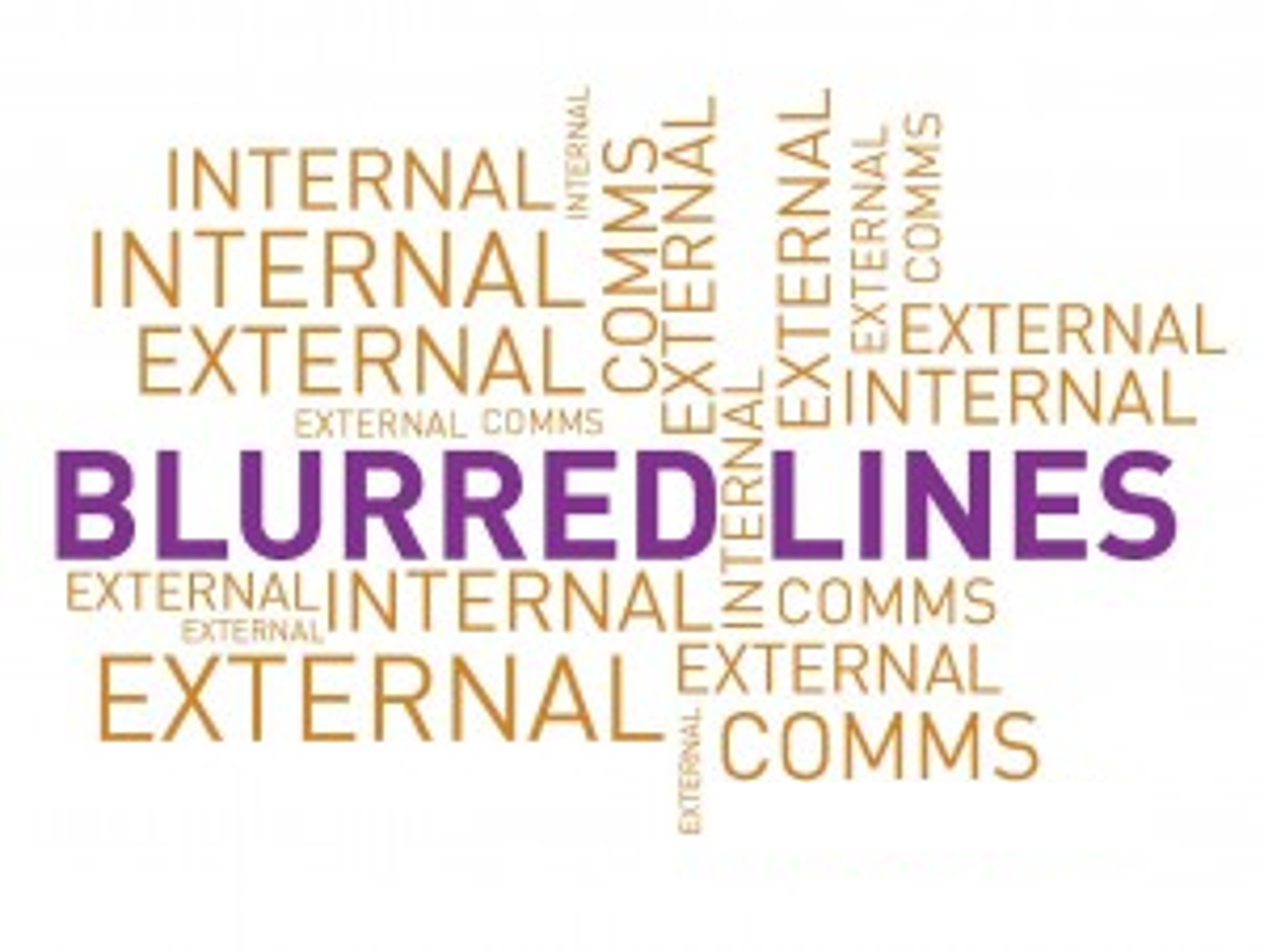The difference between internal and external communications: while internal communication takes place between staff within an organisation, external communication occurs between those within the company and those in the outside world. It is that simple.
Really?
No, not really. Though defining the two different types of communication seems easy enough, putting policies into practice and defining job roles can be very tricky. There’s the added difficulty that some ‘internal’ audiences can include external people such as investors, shareholders and past employees, while outward-facing tools like social media are often read by both. To put it simply, the lines of internal and external communications can often be blurred.
Now, with so many people working remotely, the difference between internal and external communications is harder to define than ever.
In fact, increasing numbers of organisations use online content and social media internally to communicate with their staff, as well as externally to promote their brands and interact with customers.

At one of our Sequel Presents A Coffee With webinars earlier this year, we spoke with Steve Clarke, Head of Internal Communications and Social Media at Virgin Atlantic and how the airline aligned internal and external communication during the pandemic. And how they made sure employees were kept up to date with developments being played out in the media.
Global food manufacturer Nestlé is another great example. As well as their corporate website they have Ask Nestle, a public platform that equips employees with answers to some tricky questions they might be asked. It helps employees share a positive external view of the company as a responsible business.
And you’ve probably heard of the Royal Mail’s public employee focused website, www.myroyalmail.com, which has a combination of information that is only really useful to Royal Mail employees – unless you were particularly keen to read a uniform ordering guide or learn about dog awareness – and content that could also appeal to external audiences, such as news about their Seven-Day Parcel Service.
The lesson from these businesses is the same – essentially, there is no internal and external content, there is just content – and often what is suitable for an internal audience will work externally as well, and vice versa. However you define your audience, excellent two-way internal communication is what matters.
We know that social media plays a part in the internal/external divide – both positively and negatively. Since the advent of Facebook, Twitter and other platforms, distinctions between communication audiences have become increasingly meaningless and companies are no longer in control of the message. Savvy organisations recognise that employees can be powerful advocates both internally and externally and can help spread messages on social media – but only if they believe in them.
To remain credible, internal and external messages must align. There’s no point painting a rosy picture in your internal comms for staff if social media is awash with negativity about your organisation.
Successful communicators know that timing is vital. Staff should never learn important news on social media: internal comms must come before or with external announcements. Often, it makes sense to do both together so there’s no room for ‘leaks’.
Ultimately, there’s little difference between internal and external audiences, and they all deserve clear and honest communications.
The underlying question seems to be ‘whose job is it?’ Should a combined internal and external communications campaign be handled by the internal team or the external team, or both together?
And then, where does internal communications stop and external start (or should that be the other way around?). Internal and external comms teams should get together to discuss and agree on the dividing lines. Failure to liaise can have a real impact on the work of both teams and on effective communications. It seems obvious, but we communicators need to talk to each other!